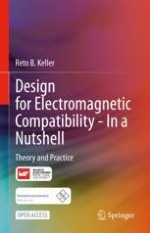Open Access 2023 | Open Access | Book

Design for Electromagnetic Compatibility--In a Nutshell
Theory and Practice
Author: Reto B. Keller
Publisher: Springer International Publishing
Open Access 2023 | Open Access | Book

Author: Reto B. Keller
Publisher: Springer International Publishing
This open access book provides practicing electrical engineers and students a practical – and mathematically sound – introduction to the topic of electromagnetic compatibility (EMC). The author enables readers to understand better how to overcome commonly failed EMC tests for radiated emission, radiated immunity, and electrostatic discharge (ESD), while providing concrete EMC design guidelines. The book also presents an overview of EMC standards and regulations and how to test for a global market access.